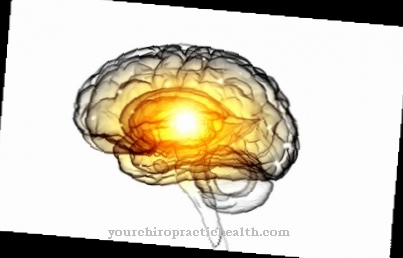The Combination therapy is the opposite of monotherapy and describes a treatment path that simultaneously comprises several different therapeutic directions or active ingredients in order to be able to act against several factors of a disease at the same time.
Combination therapy plays a role especially for the treatment of HIV patients, in which case we are talking about a highly active, antiretroviral therapy that stops the virus from multiplying so that the progression of the disease is prevented or at least delayed and thus the life of the Patient can extend. Combination therapies are generally associated with a far higher rate of side effects than monotherapy, whereby the individual active ingredients must be tested in advance for their interactions and their general compatibility.
What is combination therapy?

In medicine, combination therapy is a form of treatment that simultaneously follows more than one therapeutic principle. Most of these are drug treatments that target more than just one active ingredient. This type of medication administration can encompass two different medications or a combination preparation that carries more than one active ingredient.
The opposite of such a form of treatment is called monotherapy and is limited to one active ingredient. Combination therapies can be differentiated into several sub-forms. The best known are the triple and quadruple therapy. While three drugs are used in triple therapy, quadruple therapy contains four active substances at the same time. For the first group, Helicobacter pylori eradication is one of the best-known examples for the most complete elimination of the Helicobacter bacterium.
In addition, the life-lengthening HIV therapy is sometimes a triple and sometimes even a quadruple therapy. The greatest advantage of any combination therapy is the simultaneous action on different disease parameters. On the other hand, the biggest disadvantage compared to monotherapy is the usually high side effects of the treatment.
Function, effect & goals
With a combination therapy several factors of an illness can be positively influenced at the same time. Which drugs can be combined in the course of such a measure is decided by the respective disease, but the interactions and side effects of the individual drugs are also important here.
Combination therapy particularly plays a role in current medicine in the treatment of HIV patients. The most effective form of treatment in the fight against the HIV virus is currently a highly active antiretroviral therapy that uses at least three different drugs. All three drugs contain antiretrovirals, i.e., virus-blocking agents. Usually two nucleoside reverse transcriptase inhibitors are used and combined with a non-nucleoside reverse transcriptase inhibitor or protease inhibitors.
Often the effectiveness of the latter is also increased through a boost. This combination can limit the replication of the virus to such an extent that HIV can no longer be directly detected and the patient's life can be extended through a permanent, if not always complete, restoration of immune functions. Many of the typical symptoms of HIV are reduced in the course of therapy and the risk of disease progression is minimized.
Similar to this combination therapy, three different drugs are used in Helicobacter pyori eradication. Usually amoxicillin is combined with clarithromycin and proton pump inhibitors in the course of this measure, but the combination of amoxicillin, metronidazole and proton pump inhibitors is also conceivable. A third way is the simultaneous administration of metronidazole, clarithromycin and proton pump inhibitors. In addition to these combination therapies, combination therapies are often used for epilepsy, blood pressure disorders or type II diabetes, for example.
Combination therapies can also prove useful for diseases such as hepatitis C, ADHD, cardiac arrhythmias and complex tumors. As a rule, the following principle applies: the more complex and varied the disease, the more sensible a form of therapy with several active ingredients, since complex diseases in particular usually contain many different factors that can usually not be adequately addressed with a single active ingredient.
Risks, side effects & dangers
Any combination therapy should only be carried out with careful consideration of drug interactions. In addition, there are often significantly higher side effects for combination therapies than for monotherapy. Therefore, the attending physician and the patient must first determine the relationship between benefit and risk for the individual case.
With triple therapy for people with HIV, for example, the benefits are usually significantly higher than the risks. Most patients tolerate the therapy method that has existed since 1996 extremely well over many years. Nevertheless, side effects such as bloating, vomiting or diarrhea can occur with this treatment. A slight increase in liver values can also occur, as some of the drugs have liver-toxic properties, which, however, only cause actual liver damage in extremely rare cases.
Kidney dysfunctions are also conceivable and neuropathies, sleep disorders and nightmares can occur in the course of treatment. Allergies and fat distribution disorders are among the most common side effects. Of course, the list of these side effects cannot be applied to combination therapies for other diseases that involve completely different active ingredients and thus effects on the body.
The list is therefore only intended to serve as an illustration of generally increased side effects in combination therapies. Especially when combination therapy is used over a longer period of time, patients often develop resistance to one of the active ingredients used. For this reason, research is ongoing and for every combination therapeutic approach, other active ingredients that can be combined with one another without risk.

























.jpg)

.jpg)
